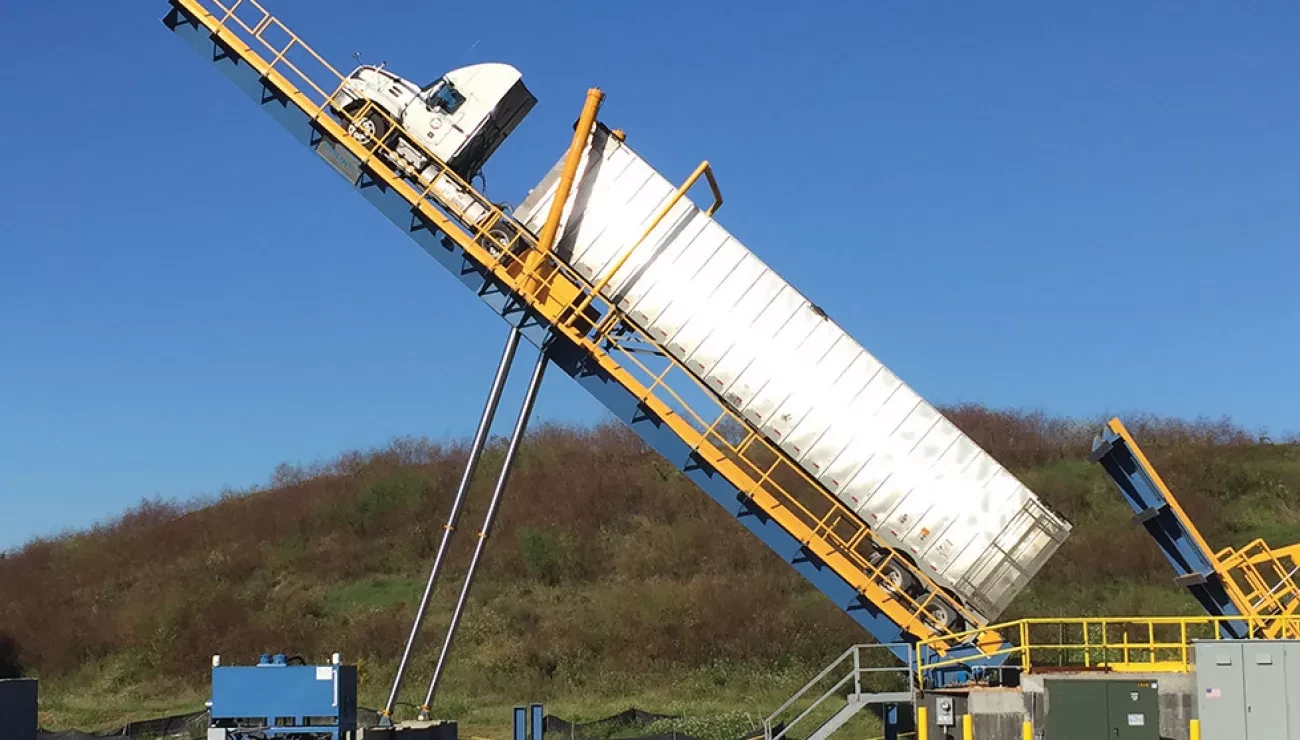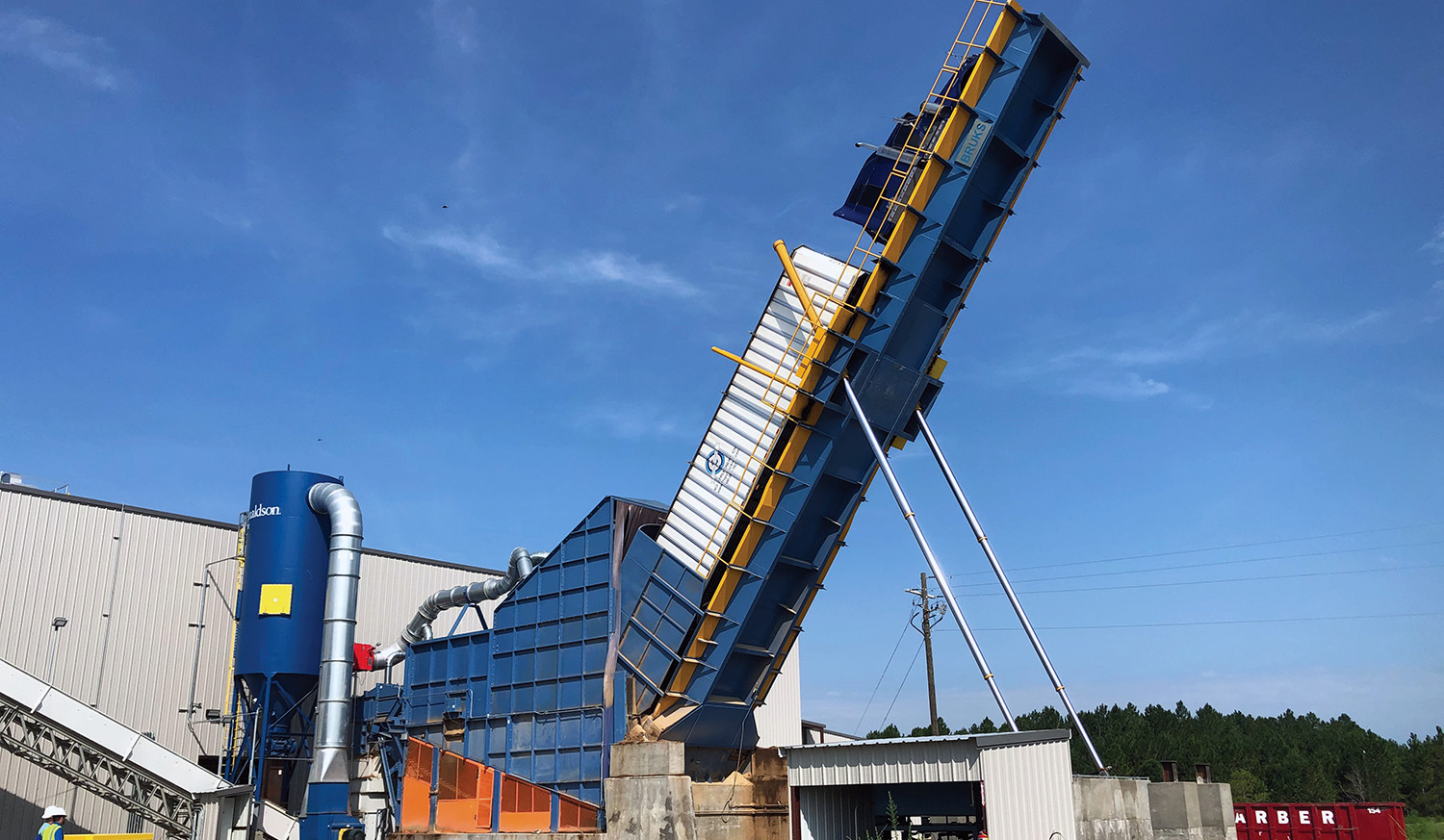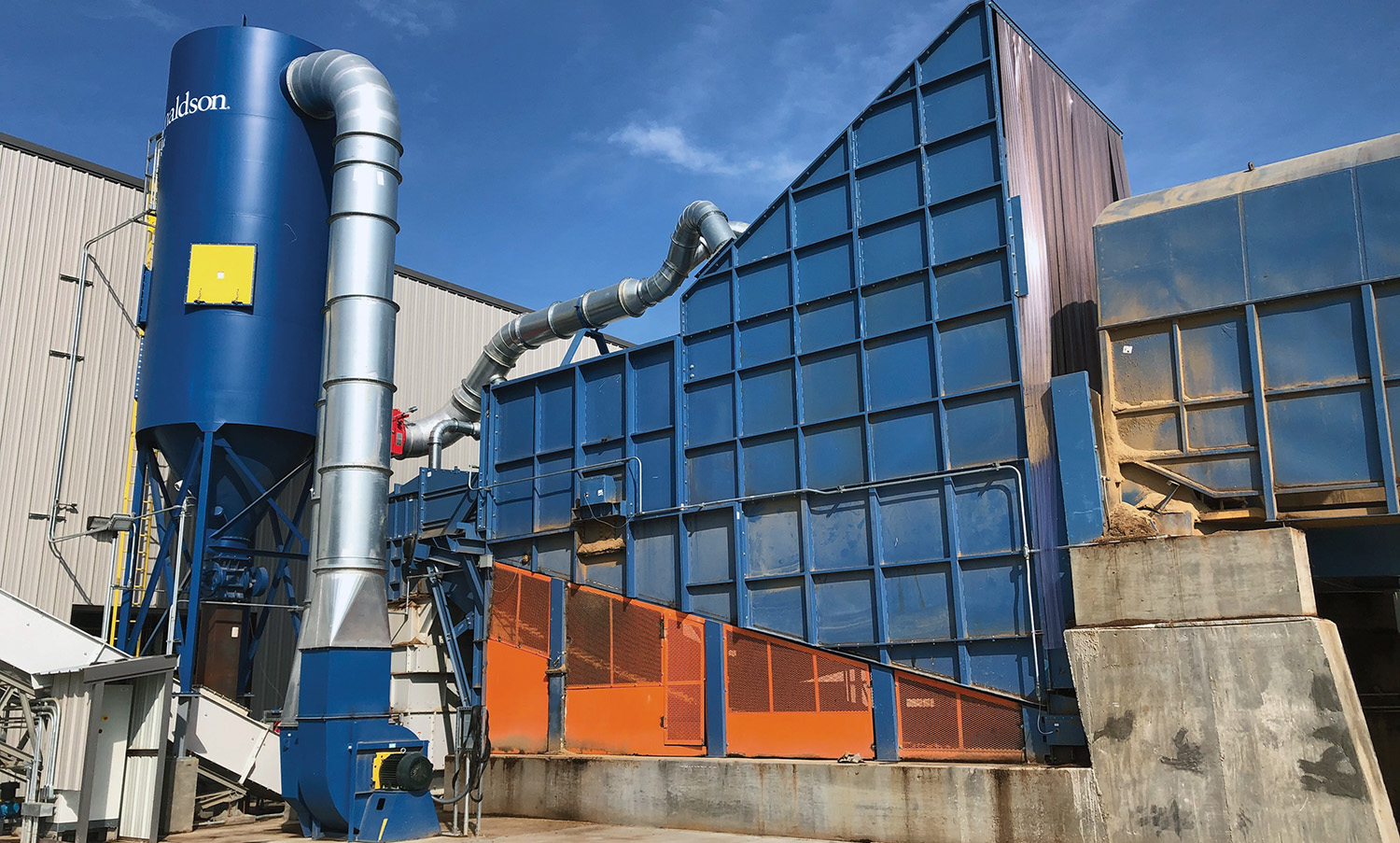
Customized truck unloader delivers dust control with a difference
20 Jan 2021Technology is often about getting the right balance, sometimes gains in one area of performance are traded against others to deliver a final product that is ideal for a task, but not always. An area that leaves little room to compromise is environmental protection. A US wood biomass plant showcases a good example of this; a specially designed truck unloading solution, from Bruks Siwertell, which not only ensures fast, efficient truck unloads, but also prioritizes environmental protection.
Increasingly strict regulations, enforcement by air quality agencies, and environmentally conscious operators are driving some of the biggest advances in controlling dust emissions in the processed wood industry.
The US facility needed a solution to efficiently unload a variety of dry biomass material from bulk trucks while controlling dust emissions above and beyond standard levels. “Over the years we have supplied various other equipment to the customer’s network of plants and mills,” notes Alex Alderks, Design Engineer for truck dumpers and stacker reclaimers, Bruks Siwertell. “These systems have served the company really well, which is why it approached us when it needed something out of the ordinary; a complete, innovative truck dump receiving system.”
The new contract called for Bruks Siwertell to supply a back-on truck dumper with a receiving hopper and dust collector, which combined to ensure close to zero fugitive dust emissions. “We listened to what was needed and worked together to develop the best solution for its biomass-receiving needs,” says Alderks. “The discussions resulted in a customized solution, which delivered high levels of dust control, without compromising on efficiency.”

Total containment achieved
The system comprises a platform and a set of hydraulic cylinders used to lift the entire truck. It is designed to rise to a maximum angle of 63 degrees, causing the free-flowing material to dump out of the back of its trailer and into a fixed, covered receiving hopper. The full lift and lower cycles are completed in approximately four minutes and the new truck dumper has the capacity to unload biomass at a rate up to 85t/h.
“Our systems have a low-profile design,” explains Alderks. “This means that trucks tip their load as close to the ground as possible, which reduces the impact of material flowing out the truck and landing in the hopper in a cloud of dust. This strategy is sometimes enough dust protection, but not in this case, where the materials the plant receives are very dusty.”
The new receiving hopper is covered on all sides and totally contained, protecting the surrounding environment against potential dust emissions and minimizing any material losses. A dust collector enhances this capability by negatively pressurizing the air to capture any dusty material in the receiving area and reintroducing it back into the system for use, further adding to the facility’s efficiency.
“Since its commissioning in early 2020, the system has significantly reduced dust emissions, improved material handling efficiency and strengthened the customer’s sustainability drive,” notes Alderks.

Popularity based on performance
“Controlling dust emissions from handling dry materials is an important concern at many such facilities,” continues Christopher Duffy, Area Sales Manager, Bruks Siwertell. “While wet chips and barky fuels are not that dusty, dry sawdust, planer shavings, and many agricultural materials are very dusty, and can easily be problematic if left unchecked and uncontained.
“Chip trucks are used throughout North America as an efficient and flexible way to transport pellets, hogged fuel, wood chips and other cargoes,” Duffy explains. “But unloading them needs consideration, if these dust emissions are to be controlled.
“Our Bruks truck dumper systems are relied upon throughout the North American wood products industry, and time and time again have proved to be by far the most effective method for receiving these materials.
“A key element of their popularity is that they can offer very efficient unloading cycles, but added to that, also specially designed, covered receiving systems that are so well-matched to the tipping platform, that they minimize dust emissions to negligible levels. The covers can be fixed or articulating, depending on what is needed, but any configuration combines to deliver the most sustainable, optimized, safe unloading process.”
Different truck dumpers to suit all applications
With around 75 installations worldwide, Bruks Siwertell’s truck dump tipping platforms are one of the fastest, most effective ways to discharge free-flowing materials, such as processed wood, from bulk trucks. They deliver long-term, cost-effective operations and have been designed to reliably perform under very high-use conditions, offering an expected service life of two million tipping and lowering cycles, which exceeds 25 years of full-time operation.
Bruks Siwertell’s range includes three main truck dumper solutions:
Back-on truck dumpers are much as the name describes, drivers back their trailers onto the platform where raised tire guides keep them positioned as the cab reverses. Average times between trucks is usually less than ten minutes including backing on, lifting and lowering the load, closing the back doors, and then driving off the platform.
Drive-over truck dumpers allow for trucks to be driven straight onto the tipping platform in a forward position, crossing a pit bridge. The average time between trucks is eight to nine minutes, making this process slightly faster as the driver does not need to reverse a trailer into place.
Extended arm truck dumpers enable the rapid unloading of free-flowing dry bulk material into a receiving hopper, which is tilted and positioned above ground. This minimizes civil engineering costs by reducing overall truck ramp requirements. The extended tipper arm allows material to fall from the trailer into the angled hopper. With the trailer dumping at this raised elevation, material cannot build up inside the trailer, potentially increasing cycle times. This enhances efficiency and maintains an optimum truck-processing capacity.
For more information, please send an email to sales@bruks.com
 Bruks-Siwertell
Bruks-Siwertell